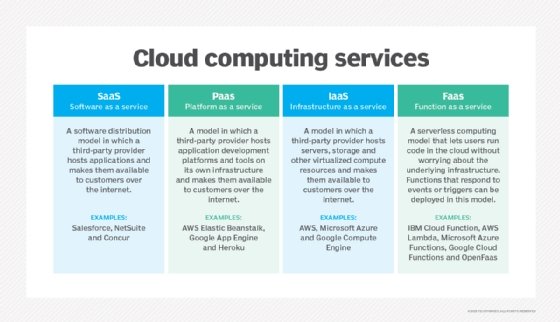SPI model
What is the SPI model?
The SPI model is an abbreviation of the most common cloud computing service models: software as a service (SaaS), platform as a service (PaaS) and infrastructure as a service (IaaS).
Cloud computing is a technology model in which a vendor provides hosted services to users over the internet. Based on its business goals, an enterprise can choose to adopt one, or multiple, of the cloud service types depicted in the SPI model:
- SaaS. A cloud provider hosts applications on its own infrastructure and makes them available to users over a network, typically the internet.
- PaaS. A cloud provider hosts an application development platform on its own infrastructure and makes that platform available to users over the internet.
- IaaS. A cloud provider hosts servers, storage, network components and other key parts of IT infrastructure and then delivers those resources to users over the internet.
In general, all three of these cloud service models follow a pay-as-you-go approach and reduce the hardware and software investments an enterprise needs to make within its own on-premises data center.

The three types of cloud computing service models within the SPI framework can be deployed as part of a public cloud, private cloud, hybrid cloud or multi-cloud strategy.







